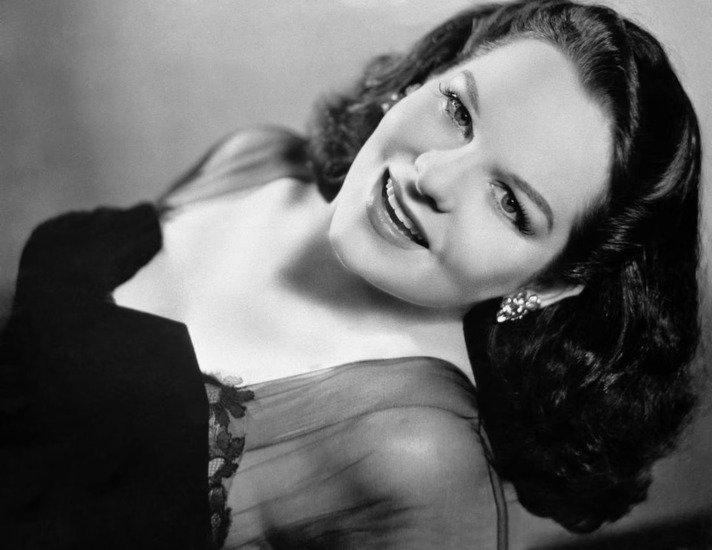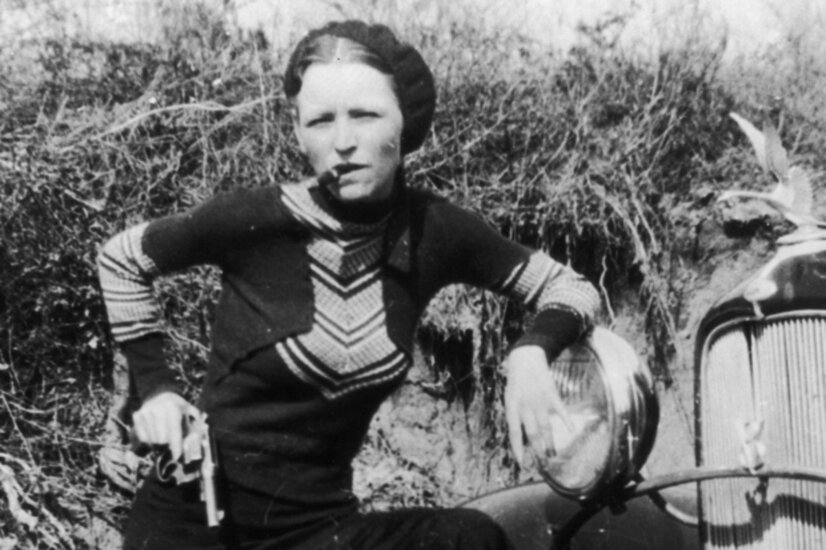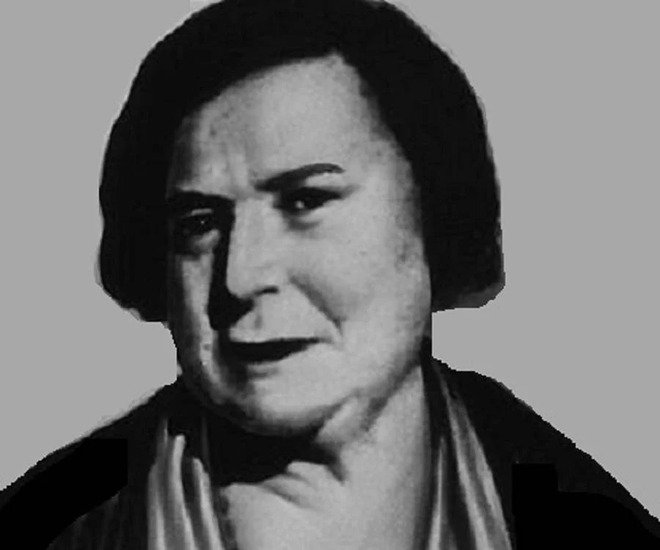The world of organized crime has been majorly men-dominated throughout history. Nevertheless, among the infamous names of mob bosses and gangsters, there exist some powerful female mobsters who have made their distinctive presence in the underworld of criminal activities.
These mob women are usually identified as “mob molls” or “black widows” and have managed to shatter gender stereotypes and demonstrate themselves as daring and forceful personalities.
In this article, we will look into the lives of the most notorious female mobsters of all time and explore their tactics for surviving in the treacherous and harsh realm of organized crime.
Virginia Hill

Virginia Hill’s life could be compared to a movie, as she went from being born into a low-income family to becoming one of the greatest mobsters in history. Her criminal activities ranged from money laundering to heroin trafficking. From an early age, she believed that her feminine wiles would take her far, and she used this to her advantage to trap people.
Throughout the 1930s to the late 1940s, Hill’s charming and courageous ways inspired many other women in the world of mobsters. She later formed an alliance with Bugsy Siegel, a Brooklyn mobster.
However, after Siegel’s death, Hill’s fortune took a turn for the worse. Despite marrying her second husband in 1950 and having a son, she had significant debts that followed her across borders and countries.
The IRS accused her of evading $221,000 in taxes, making it impossible for her to return to America. Her only solution was to kill herself. Hill attempted suicide in 1965, but her husband saved her by getting her to the hospital on time. However, in 1966, she committed suicide by overdosing on drugs she had administered herself.
Bonnie Parker

Bonnie Elizabeth Parker hailed from Rowena, Texas, and was known to be an articulate and intelligent child. In 1930, she met Clyde Barrow and soon became involved in criminal activities ranging from bank robberies to multiple murders committed throughout the 19th century.
Perhaps most infamous for stealing a car in Illinois, Bonnie’s unique style of firing guns and smoking cigars left an indelible impression on those around her. Their reign of terror came to an end when they faced an unfortunate end after being ambushed by officers and shot to death on May 23, 1930, near Bienville Parish.
As a tribute to her and Clyde’s infamous partnership, a Netflix series named “The Highwaymen” was created.
Ma Barker

Ma Barker hailed from an impoverished family from Ash Grove, Missouri, and tied the knot with George Barker, a reserved and hardworking farmer. Unlike her husband, she was headstrong and easily provoked.
Her association with organized crime commenced after she gave birth to Herman, Lloyd, Arthur, and Fred. Together, they formed the notorious Barker-Karpis Gang in 1931, which resorted to ruthless and senseless killing sprees during robberies.
Their infamy gained prominence in 1932 after Fred gunned down a sheriff. A high-profile heist of more than $250,000 from the Northwestern National Bank in March of the same year further fueled their notoriety.
On January 16, 1935, Barker and Fred went into hiding in California where law enforcement officials tracked them down. When the police surrounded their hideout and urged them to surrender, Fred opened fire, and a prolonged shootout ensued that ended with the duo lying dead upstairs.
Helen Gillis
Hellen Gills was known more for her unwavering support of her notorious husband, Lester M. Gillis, otherwise known as “Baby Face Nelson,” than for any personal exploits in the world of crime. Despite his lengthy criminal history, which began when he was just 14 years old, Hellen’s only involvement with crime was her steadfast loyalty to her spouse.
In 1931, the couple was declared a “Public Enemy” and a “shoot to kill” warrant was issued for their arrest. However, it was not until Lester became involved with John Dillinger in April 1934 that Hellen’s own infamy in the criminal underworld began to rise.
Their partnership was so dangerous that she was unable to avoid the scrutiny of the public eye. Unfortunately, Hellen’s husband met his end during a shootout with FBI agents on November 27, 1934, while in the company of Dillinger.
Shortly thereafter, on November 29, 1934, Hellen Gillis was sentenced to a one-year stint in the Women’s Federal Reformatory in Milan, Michigan.
Despite her long life following the death of her infamous husband, Hellen Gillis passed away in 1987 and was buried next to Lester in Chicago, suggesting her desire to remain by his side even in death.
Maria Licciardi

The Camorra family in Italy is a notorious criminal organization comprised of savvy, ruthless clans. Maria Licciardi was born into this family, and due to the imprisonment or death of many male members in the 1990s, women were able to step into leadership roles.
Maria’s involvement in the family’s illegal activities grew after her husband’s death, leading her to found The Secondigliano Alliance—a strategic alliance of Camorra clans responsible for controlling drug trafficking and extortion since the 1990s.
Between 1993 and 2001, she became one of the most powerful bosses of the Camorra group in Naples. Her reputation earned her nicknames such as “Godmother” and “Princess.” Unfortunately, Maria’s success was short-lived as members of a rival Camorra clan shot several of her clan’s members, triggering her revenge that resulted in the murder of 14 people.
Her involvement in these murders led to the Neapolitan police raiding a meeting of mafia bosses in 1999, and she eventually went into hiding but was recognized and arrested in 2001. Since then, Maria has been serving her prison sentence.
Raffaela d’Alte Rio
Raffaela d’Alte Rio, who is referred to as “Italy’s most wanted criminal,” married Nicola Pianese from a criminal family. Until her husband’s murder in 2006, she was not involved in any crimes or criminal activities.
However, after her husband’s death, she became involved in extortion and counterfeit money trafficking rings. Despite being targeted by her rival gang and surviving gunshot wounds, she continued with her criminal activities.
As reported by The Daily Mail, Raffaella d’ Alte Rio was arrested by Italian police in 2012 for possessing illegal weapons, dealing drugs, and kidnapping. The arrest took place during a series of dawn raids by armed officers who used helicopters and sniffer dogs in the operation, along with 65 other suspects.
Opal “Mack Truck” Long
Bernice Clark was notorious enough to earn her “Mack Truck” name. She was a part-time shoplifter and a full-time key member of John Dillinger’s “Terror Gang.” She was involved with the gang because of her husband, Russell Clark.
The terror gang was infamous for robbing banks and escaping effortlessly. She was the caretaker of the gang. However, things got bitter when her husband Russell Clark was arrested in Tucson, Arizona, on January 25, 1934.
She violently attacked the police when they stopped her, but later she went under custody herself. She didn’t speak a word against Dillinger’s gang even though Dillinger didn’t help her out. After she earned parole in November 1934, she started living in Chicago.
Santokben Jadeja

Santokben Jadeja, who once held full control over illicit operations in Porbandar, was the first woman to enter the world of the underworld. Her husband was killed in December 1986 by Kala Keshav due to an ongoing rivalry and this event pushed Santokben into the forefront, leading her into a life of crime from being a homemaker.
She was responsible for the murder of 14 individuals whom she believed were connected to her husband’s death. In 2007, she made headlines again after being accused of killing her brother-in-law Navghan Arsi, and in 2008, her son Karan Jadeja was charged with killing his wife, making Santokben a part of yet another controversy.
It is not uncommon for influential individuals to venture into politics in India, and Santokben Jadeja was one of them. She was appointed as an MLA from 1990 to 1995 under the Janata Dal ticket. However, she did not receive much support or favor from the political world in her later years. She died of a heart attack at her residence in Porbandar on Thursday, 31 March 2011.
Judy Moran

Judy was born on December 18, 1944. Initially, she entered the world of crime as a member of the Moran household, a notorious gang in Melbourne, Australia. Subsequently, she gained notoriety when she became the leader of the same gang after her first husband’s death.
In the year 1982, her first husband, Johny Cole was shot during a drug-related conflict, and in 2000, her son, Mark Moran, was also murdered. Following Johny’s death, Judy married her second husband, Lewis Moran. However, he was also shot at the Brunswick Club in Melbourne in March 2004.
Judy and her criminal family were mainly involved in drug trafficking, and their involvement in the murder of Des Moran, Judy’s brother-in-law in 2009, brought her into the limelight.
After multiple trials, Judy was convicted of the murder of her brother-in-law, and along with her three accomplices, she was sentenced to serve a 26-year sentence. Currently, Judy Moran is 78 years old and serving her lengthy sentence in prison.
Lola la Chata

Lola la Chata, also known as María Dolores Estévez Zuleta, was a female drug kingpin who made a name for herself in the Mexican drug underworld between the 1930s and the 1950s. She was a savvy businesswoman who dealt with a variety of prohibited substances such as marijuana, morphine, and heroin and managed to become a significant figure in the global illegal narcotics trade. Her fame was magnified by the sensationalized attention she attracted from the tabloid media, which often depicted her as both captivating and menacing.
Despite numerous obstacles, Estévez successfully expanded her criminal enterprise from a local to a global scale during a period of heightened sophistication in the drug trade. Her ability to sell drugs both inside and outside of prison for nearly 30 years underscored her influence and craftiness.
Estévez’s activities strained relations between the Mexican and United States governments, leading to a presidential decree that aimed to limit her operations. However, despite the risk of a life sentence, she managed to escape incarceration and maintained her position as a pioneering figure in the drug trafficking industry.
Bessie Starkman
During the early 20th century in Hamilton, Ontario, Canada, Bessie Starkman, or Besha Starkman, gained prominence as an organized crime figure. She partnered with Rocco Perri, her common-law partner, to establish a highly profitable bootlegging operation after the prohibition of alcohol sales and distribution in Canada and the United States.
Starkman’s primary responsibility was managing their illicit trade’s financial aspects, showcasing her cunning business expertise in a perilous moneymaking industry. Her significant role in the enterprise led to its sustained profitability, despite copious hindrances from rival gangs and law enforcement authorities.
